- How to Propagate Monstera Guide: The Three Ways to Succeed - September 17, 2021
- Escargot Begonia: Why Is The Rex Begonia So Rare? - August 31, 2021
- Rieger Begonia: When You Can Expect The Hiemalis Begonia To Flourish - August 31, 2021
This native to the tropical regions of South and Central America is quite easygoing. As is the case with most Pilea plants, it is easy to propagate and easy to care for; it really is a gardener’s dream plant.
How to Identify Pilea Moon Valley
Just one glance and you will notice that Pilea Moon Valley looks very similar to its family member, the Friendship Plant. Both plants share the following key features:
- Leaves that are oval in shape
- Leaves with fuzz on their tops
- Leaves that have serrated edges
- Leaves that are corrugated on their tops
- Leaves with undersides that are colored red or purple
- Leaves that are colored burgundy or bronze in the center and green on the outside
Fortunately, there is a key difference between the two Pilea varieties, and that is, Pilea Moon Valley grows more upright than its cousin. The Friendship Plant grows more like a vine.
How to Grow Pilea Moon Valley from Seed
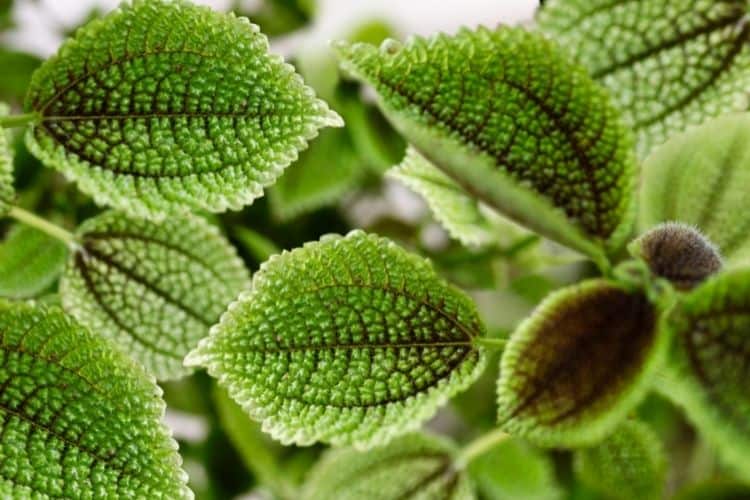
Pilea plants are not known for producing seeds when kept indoors, growing a new plant from seeds is very unlikely. It is also much easier to use stem cuttings.
How to Propagate Pilea Moon Valley
The best way to grow a new Pilea Moon Valley is via stem cuttings. This process should be done during spring so as to reduce the chance of shock. The steps for doing this are as follows:
- Using a sterile cutting utensil, cut off a healthy 3-inch stem that includes at least two leaves and a node
- Dip the bottom of the stem cutting in a rooting powder
- Plant the cutting in a container filled with a peat-based potting soil
- Water the potting soil and keep it moist but not soggy
- Set the container in a warm spot that gets plenty of bright, indirect sunlight
- Care for as a regular Pilea Moon Valley plant
Note: you can also grow a Pilea stem cutting in a clear jar filled with water. Just make sure to use a stem cutting that includes a leaf and a node and replace the water regularly. Once the stem cutting has produced some roots, it should be planted in the soil.
Pilea Moon Valley Growing Conditions
This plant requires temperatures that range between 65 and 75 degrees Fahrenheit. It can live in regular humidity levels but it prefers growing in humidity levels of at least 50%. To provide these temperatures and humidity levels, consider using the following equipment:
How to Plant Pilea Moon Valley
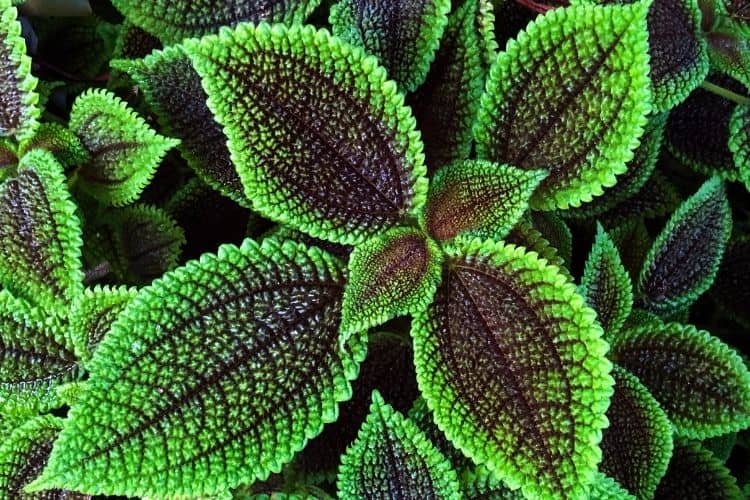
When this time comes time to plant or repot a Pilea plant, keep these things in mind:
- Transplant in the springtime to reduce the chance of shock
- Do not fertilize the plant after repotting it since can produce more harm than good
- Do not touch the root system since this can be damaged very easily
The signs a plant needs to be repotted are:
- Stagnated growth
- Roots that are extending from its container’s drainage holes
- It has been in the same potting soil for several years
- It requires more water than normal
The steps for repotting to Pilea Moon Valley are:
- Fill a new container that is one inch larger than its previous container with potting soil
- Create a hole in the soil for the plant to set inside
- Carefully remove the plant from its current container by laying the plant on its side and then pulling the pot off the root system
- Gently dust off any excess soil from its roots
- Set the plant into the hole in the new container
- Spread the soil around so that the plant is secure in its new container
- water the plant
- Set it in a warm spot with indirect sunlight
Pilea Moon Valley Potting & Soil
Pilea plants require soil that drains well and has plenty of organic matter in it. It also needs a plant container that can also drain off excess water.
The following are some really great soil options to use with Pilea plants:
- All-Purpose Houseplant Potting Soil Mix
- Custom-Blend Organic Indoor Plant Potting Soil
- Simple Potting Soil for House Plants
- African Violet Potting Mix
Pilea Moon Valley Water Requirements
Always test the plant’s soil before watering it so that the risk of root rot is limited. If the top inch of the soil is dry, then the plant can use a drink; however, if the soil is still moist, the plant does not need any more water. Overwatering is the main reason why plants get diseases and pest infestations and die. Learn to water your plants properly and you will eliminate most of your gardening troubles.
When you do water the plant’s soil, be sure to water it evenly and thoroughly so that excess water flows from the container’s drainage holes. You can also water it in the soak and dry method, but be sure to allow the soil time to fully drain off excess water.
Take advantage of modern technology by using a plant watering app. This type of app can help track when a plant has been watered, set reminders to water it, and get answers to common plant care questions.
Pilea Moon Valley Light Requirements
Since they are not suited for direct sunlight, the best place to set these plants is in a spot that gets plenty of bright, indirect sunlight. Use a light meter to ensure that your plant is receiving the amount of sunlight it needs.
Best Pilea Moon Valley Fertilizer
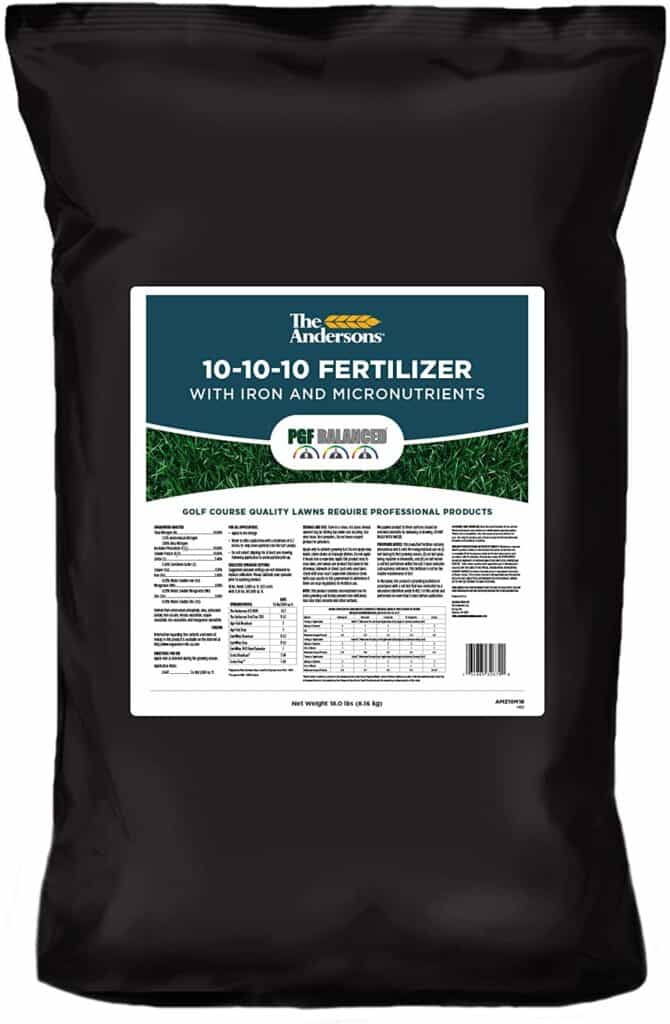
Pilea varieties do not require a lot of fertilizer, but they can benefit from a half or a quarter dose of balanced fertilizer once during springtime and once during mid-summer. There is no need to fertilize these plants during autumn or winter. Be sure to give this feeding after the plant has been watered.
Best Pilea Moon Valley Companion Plantings
These tropical plants love extra humidity, so why not supply them with a few plant companions. This could reduce the need for a humidifier or for misting your plants regularly.
The following three options are just a small selection of the many wonderful tropical plants that would be ideal as a companion planting alongside the Pilea Moon Valley plant.
Pilea Glauca
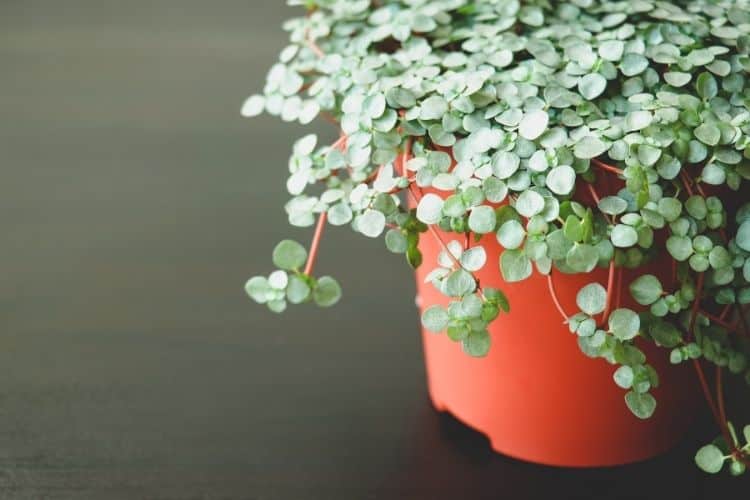
Why not pick another tropical plant that is in the same family? This means that care requirements will be easy and streamlined, plus, they will look stunning next to one another.
Pros
- Pilea Glauca is not toxic
- Pilea Glauca is a cute and easygoing plant
- Pilea Glauca has care requirements that are similar to those of the Pilea Moon Valley
Cons
- Pilea Glauca is sensitive to minerals in its water, and consequently, requires rainwater or distilled water rather than just tap water
Delicious Monster
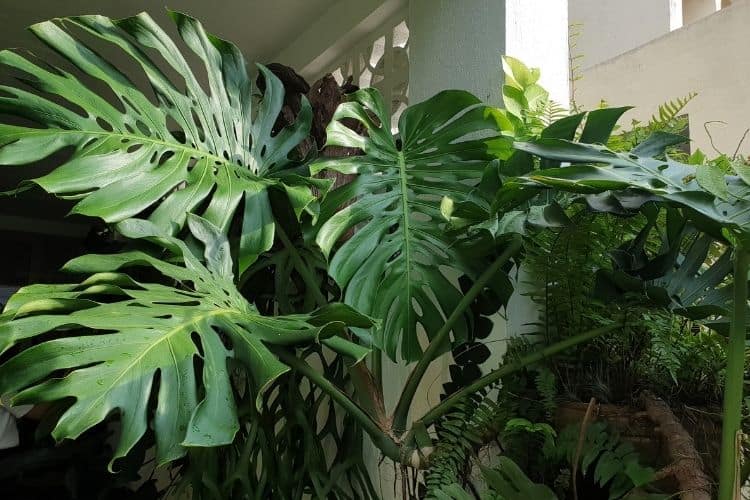
This tropical plant features large green leaves with a Swiss Cheese look. Not only are they lovely to look at, but they are also lovely to care for.
Pros
- Delicious Monster is beautiful
- Monstera Deliciosa is easy to care for
- Monstera Deliciosa is easy to propagate via stem cuttings
- Monstera Deliciosa produces edible fruit
Cons
- None
Calathea Medallion
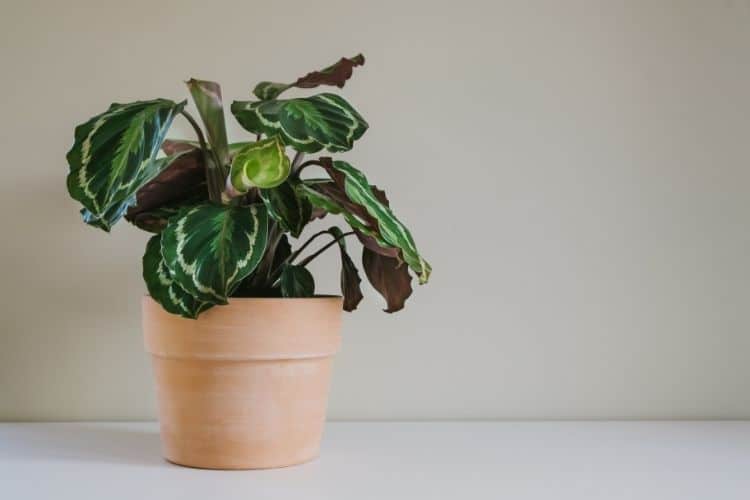
This tropical plant features leaves that look as though feathers have been painted on their tops. With its good looks, Calathea Medallion is a much sought-after houseplant.
Pros
- Calathea Medallion is a unique-looking plant
- Calathea Medallion is not toxic
Cons
- Calathea Medallion can be a little fussy about its care needs
Pilea Moon Valley Diseases and Common Problems
Below is a list of the most common issues faced by Pilea Moon Valley. Take some time to learn the diseases and pests that attack these plants frequently and you will be well equipped to prevent them from an attack or treating them when they are attacked.
Leaves with Brown Spots
This could be a sign that the plant has been exposed to direct sunlight, has received too little humidity, or it has been over-fertilized. It will be a process of elimination to determine what is causing the brown spots on its leaves.
- A plant that is exposed to a lot of direct sunlight should be moved to a shadier area.
- A plant that does not have enough humidity should be moved to a more humid area or given to a humidifier.
A plant that has been over-fertilized may need to have its soil saturated with water.
Leaves that are Wilting
This is a typical symptom of a plant that is under-watered. Tweak its water regimen and it should recover.
Root Rot
Evidence of this problem is leaves that have turned brown or black. To treat this problem, let the soil dry out completely and set the plant in a place where it will get plenty of airflow. If it is still struggling with too much water in its container, follow these steps:
- Remove the plant from its container
- Wash off all the dirt from its roots
- Cut off any roots that are rotten
- Replant the plant in a clean container with fresh soil
- Wait to water it for a few days
Spider Mites
This type of infestation looks like webbing spread over the plant’s leaves and stems. To deal with this type of infestation, follow these steps:
- Spray the plant with a mixture of 1 quart of warm water, 1 tsp. of dish soap, and 2 tsp. neem oil
- Wipe off the leaves and stems
- Repeat as necessary
Stems That Are Leggy
This is a sign that the plant needs to be pruned back a little. Be sure to pinch flower buds and some of the newly growing leaves as well as leggy trim back stems for a neat and kempt look.
Yellowed or Yellowing Leaves
This is a sign that the plant has been overwatered. If its water regimen is adjusted it should recover.
Pilea Moon Valley Treatments and Maintenance
The best way to prevent harmful diseases and pest infestations is to provide the plant with regular care and cleaning. Here are a few tips to help keep your plant as healthy as it can be.
- Check it for signs of disease and infestations regularly, and treat them quickly.
- Clean the plant’s leaves regularly with neem oil.
- Learn how to properly water and feed your plant.
- Make sure your plant is set in an area with adequate amounts of sunlight, heat, and humidity.
- Mix diatomaceous earth into the soil of potted plants.
Where to Buy Pilea Moon Valley Seeds Online
Pilea seeds of all varieties are not readily available. If you decide to search for seeds, look for those who have good ratings and price their seeds between $1 and $2 per seed. A few online shops that are a good place to begin your search are:
Where to Buy Mature Pilea Moon Valley Online
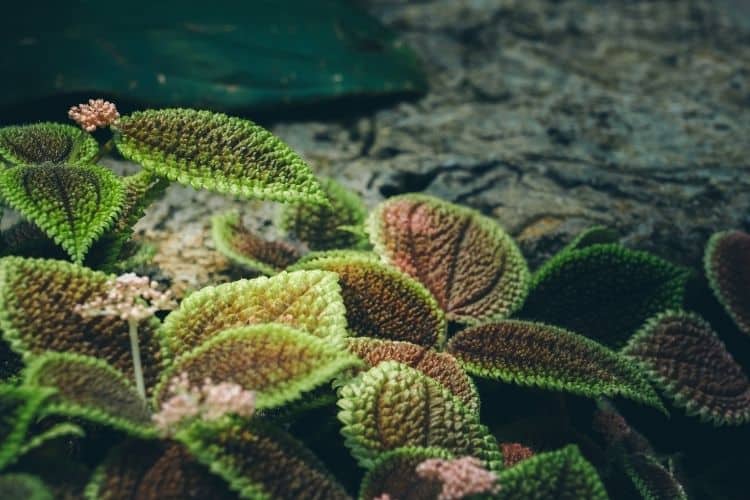
One of the best online sites to purchase any type of plant is Etsy. The following shops are all highly rated and reviewed places to look for Pilea Moon Valley:
FAQs
Question: Is Pilea Moon Valley Toxic?
Answer: No, this is not a toxic plant.
Question: Which USDA Hardiness Zone Can Pilea Moon Valley be Planted In?
Answer: This is a tropical plant that is highly sensitive to frost and cold weather. If you live in a zone that is lower than this, plant your Pilea Moon Valley in a container that can be transferred indoors during cold weather.
Question: How Large Will the Pilea Moon Valley Plant Grow?
Answer: This is a small, compact plant that will grow in a bush-like structure that never gets taller than one foot.
In Conclusion
Pilea Moon Valley is a wonderful plant for all gardening skills and all gardens. It is a lovely plant to use as a ground cover in warm climates or as a hanging plant in an indoor space. Wherever you choose to grow yours, you are sure to have a beautiful and successful plant.
